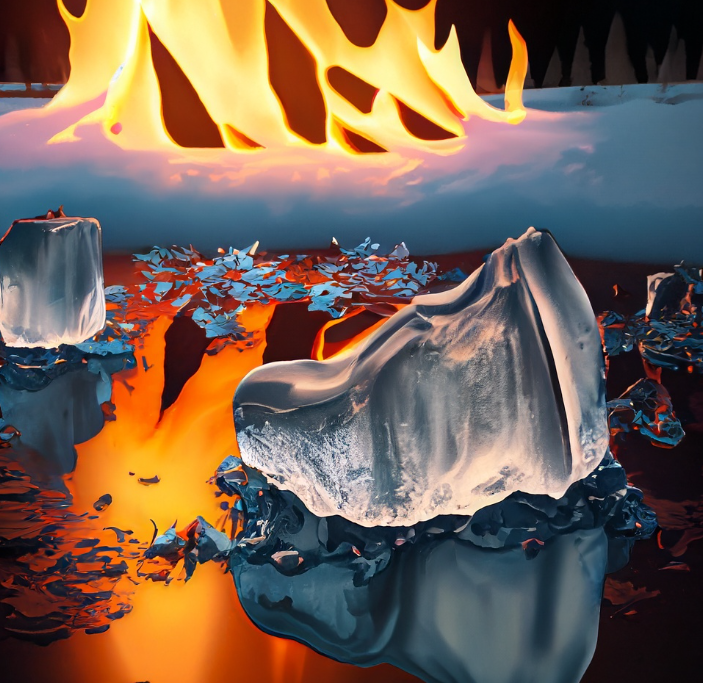Using a heat gun to defrost a freezer is not recommended. Heat guns are designed for specific applications and are typically used for tasks such as paint stripping, thawing pipes, make candles, or removing adhesives. They produce very high temperatures and can potentially damage the components of a freezer or cause a fire hazard.
Most heat guns blow at a temperature of 100 – 760°C (200-1400°F) which is significantly higher than hair dryers. While the hottest temperature a blow dryer can actually get hovers around 197°C (80 – 140°F). Some of the newer heat guns have built in digital temperature controls that increase in increments of 10°C but older models just have a high/low setting and don’t have accurate temperature controls.
The type of plastic used inside freezers can vary depending on the manufacturer and model. However, some of the most commonly used plastics for freezer interiors are high-density polyethylene (HDPE) and polypropylene (PP). These materials are known for their durability, resistance to low temperatures, and ability to withstand wear and tear over time.
It’s worth noting that the main plastics used in refrigerator production include polyurethane (PU), polystyrene (PS), polypropylene (PP), styrene-butadiene-acrylonitrile copolymer (ABS), and polyethylene (PE). However, the type of plastic used in the freezer compartment may differ from the rest of the refrigerator. ABS has a melting point of 200°C (392°F). While PVC started melting between 160 and 210 degrees Celsius (320 and 410 degrees Fahrenheit). These melting temperatures are at the top end of a hair dryer but the lower end of where heat gun would be generating.
| Application | Material | Optimum Temperature |
| Drying | Wet Paint | 232°C – 399°C (450°F – 750°F) |
| Drying | Wet Plaster | 232°C – 399°C (450°F – 750°F) |
| Removing | Dry Paint | 482°C – 649°C (900°F – 1200°F) |
| Removing | Adhesive-backed floor coverings | 177°C – 399°C (350°F – 750°F) |
| Heating | Electrical shrink-wrap | 177°C – 260°C (350°F – 500°F) |
| Heating | Window & craft shrink-wrap | 121°C – 288°C (250°F – 550°F) |
| Heating | Frozen water pipes | 399°C – 649°C (750°F – 1200°F) |
| Heating | Frozen metal locks | 177°C – 343°C (350°F – 650°F) |
| Molding/Bending | Plexiglass & Formica | 121°C – 232°C (250°F – 450°F) |
| Molding/Bending | Plastics | 121°C – 232°C (250°F – 450°F) |
| Loosening | Rusted bolts/nuts | 482°C – 649°C (900°F – 1200°F) |
| Sealing | Nylon rope ends | 232°C – 343°C (450°F – 650°F) |
| Waxing | Snowboards and skis | 121°C – 232°C (250°F – 450°F) |
| Defrosting | Refrigerator & Freezer | 232°C – 399°C (450°F – 750°F) |
| Wrapping | Vinyl | 60°C – 80°C (140°F – 176°F) |
| Manufacturing | Candle making | 60°C – 85°C (140°F – 185°F) |
| Manufacturing | Resin art | 21°C – 24°C (70°F – 75°F) |
When defrosting a freezer, it’s best to follow the manufacturer’s instructions or guidelines provided with the appliance. Typically, the recommended method is to turn off the freezer, remove any items inside, and allow the ice to melt naturally. Placing towels or containers to collect the melting water can help prevent messes.
If you’re in a hurry to defrost the freezer, you can use a fan to circulate air inside and speed up the process. Avoid using sharp objects such as kitchen knives or metal scrapers or any form of direct heat, such as hairdryers or heat guns, as they can cause damage to the freezer’s interior or even injure yourself.
